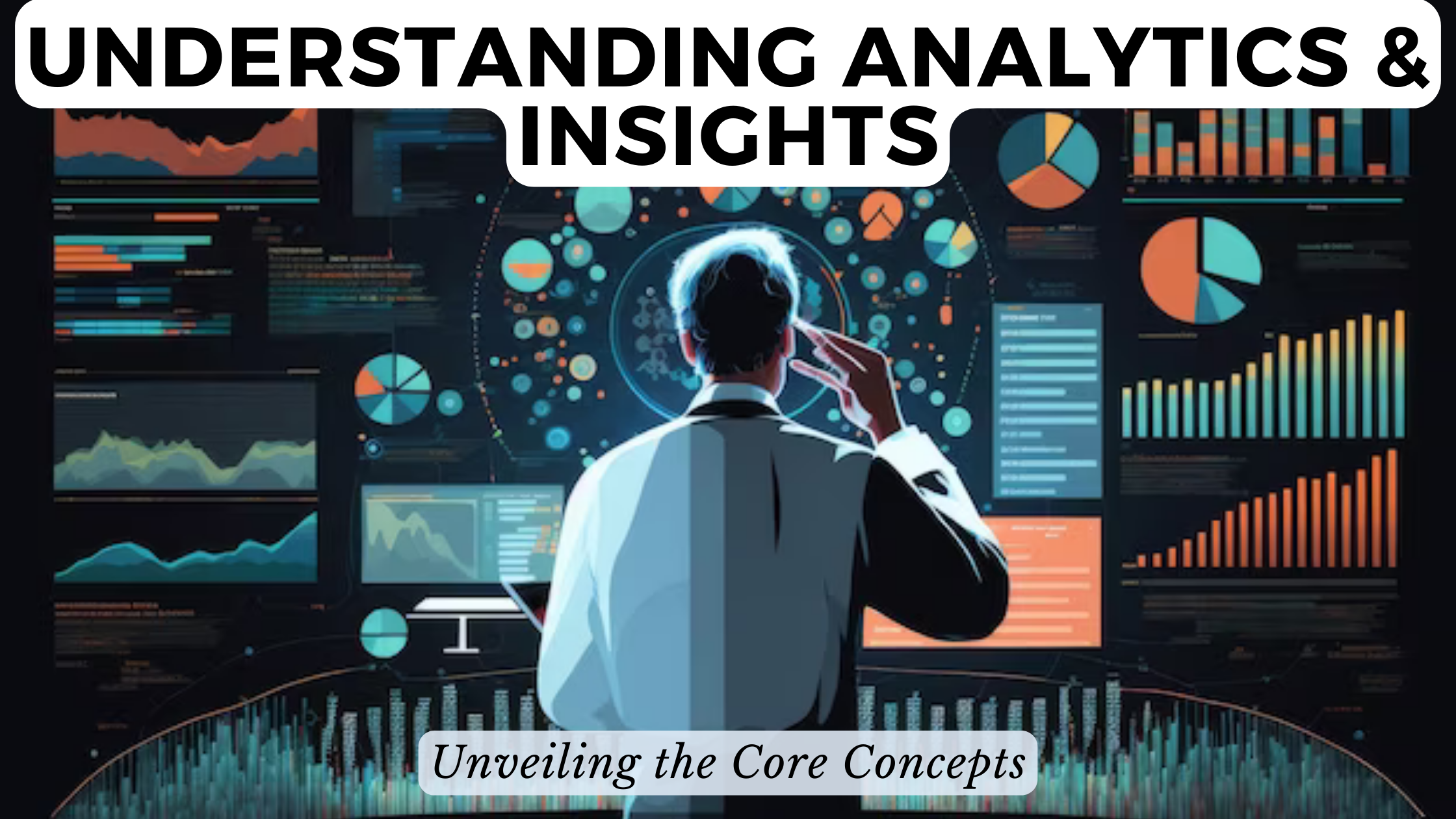Understanding Analytics & Insights: Unveiling the Core Concepts
- Data as a Service (DaaS) Software Marketing & Analytics


Understanding Analytics & Insights: Unveiling the Core Concepts
In today’s data-driven world, the terms “analytics” and “insights” have become integral to decision-making processes across various industries. In this comprehensive guide, we’ll delve into the core concepts of analytics and insights, exploring their significance and unveiling the power of leveraging data for informed decision-making.
Analytics: Decoding the Data
1. Definition of Analytics:
Analytics refers to the systematic computational analysis of data or statistics. It involves interpreting patterns, trends, and meaningful insights from datasets to inform decision-making and optimize processes.
2. Types of Analytics:
- Descriptive Analytics: Examines historical data to understand what has happened.
- Diagnostic Analytics: Seeks to identify why something has happened, analyzing the root causes.
- Predictive Analytics: Utilizes statistical algorithms and machine learning to forecast future trends.
- Prescriptive Analytics: Recommends actions to optimize outcomes based on predictive analytics.
3. Key Components of Analytics:
- Data Collection: Gathering relevant data from various sources.
- Data Processing: Cleaning, transforming, and organizing the data for analysis.
- Data Analysis: Applying statistical methods, algorithms, or machine learning models to derive insights.
- Data Visualization: Presenting findings through charts, graphs, and dashboards for easier interpretation.
4. Importance of Analytics:
- Informed Decision-Making: Provides a data-driven foundation for making strategic decisions.
- Performance Optimization: Identifies areas for improvement and efficiency.
- Risk Management: Helps in foreseeing potential risks and mitigating them.
- Competitive Advantage: Enables businesses to stay ahead by understanding market trends.
Insights: Transforming Data into Actionable Knowledge
1. Definition of Insights:
Insights are the valuable and actionable interpretations drawn from data analysis. They provide a deeper understanding of trends, patterns, and relationships within the data.
2. Distinguishing Features of Insights:
- Actionable: Insights should suggest specific actions or strategies.
- Relevant: Pertinent to the business goals and objectives.
- Timely: Delivered in a timeframe that allows for impactful decision-making.
- Contextual: Consider the broader context and implications.
3. How Insights Differ from Raw Data:
- Raw Data: Raw data is unprocessed information collected from various sources.
- Information: Data processed and organized into a structured format.
- Knowledge: Information interpreted and connected to derive meaningful patterns.
- Insights: Actionable knowledge derived from the understanding of patterns and trends.
4. Transformative Power of Insights:
- Strategic Planning: Guides long-term planning and decision-making.
- Customer Understanding: Provides a deeper understanding of customer behavior and preferences.
- Operational Efficiency: Identifies opportunities for streamlining processes and improving efficiency.
- Innovation: Fuels innovation by uncovering new possibilities and trends.
The Analytics and Insights Lifecycle
1. Data Collection:
- Gather data from various sources, including internal databases, external platforms, and user interactions.
2. Data Processing:
- Cleanse, organize, and prepare the data for analysis to ensure accuracy and relevance.
3. Data Analysis:
- Apply analytical methods, algorithms, or statistical models to derive meaningful patterns and trends.
4. Insights Generation:
- Interpret the analyzed data to derive actionable insights that align with business goals.
5. Visualization:
- Present insights through visualizations like charts, graphs, and dashboards for easier interpretation.
6. Decision-Making:
- Use insights to inform strategic decisions, operational improvements, and innovation.
7. Feedback Loop:
- Continuously iterate and refine the analytics process based on feedback and changing business needs.
Relevant SaaS Products for Advanced Analytics:
1. Google Analytics
- Official Website: Google AnalyticsGoogle Analytics is a robust web analytics service, offering detailed statistics and analytics tools for website and app performance. Track user interaction, analyze user behavior, and enhance your online presence.
2. Mixpanel
- Official Website: MixpanelMixpanel focuses on product analytics, allowing you to understand how users interact with your application. It’s particularly useful for product managers seeking actionable insights.
3. Hotjar
- Official Website: HotjarHotjar provides insights into user behavior through heatmaps, session recordings, and surveys. Gain a visual understanding of how users navigate your website.
4. Tableau
- Official Website: TableauTableau is a powerful data visualization tool that turns raw data into an understandable format. Create interactive and shareable dashboards for comprehensive data representation.
5. Looker
- Official Website: LookerLooker is a data exploration and business intelligence platform. It allows you to create and share reports, ensuring that everyone in your organization has access to the same insights.
Conclusion: Empowering Decision-Making with Insights
Understanding analytics and deriving meaningful insights is essential for staying competitive. As businesses navigate the complexities of data, the right tools can make all the difference.
Now, imagine streamlining all your analytics tools in one place. Subscribed.FYI is the solution for managing your SaaS subscriptions seamlessly.
Unlock Exclusive Deals with Subscribed.FYI Deals
Subscribed.FYI Deals offers free, member-only deals on 100+ SaaS tools. Sign up today to unlock savings totaling over $100,000 per year. Simplify subscription management and empower your team with informed decisions.
Relevant Links:
Elevate your understanding of analytics and insights while optimizing your SaaS subscriptions with Subscribed.FYI. Make data-driven decisions with confidence, and propel your business toward success.





